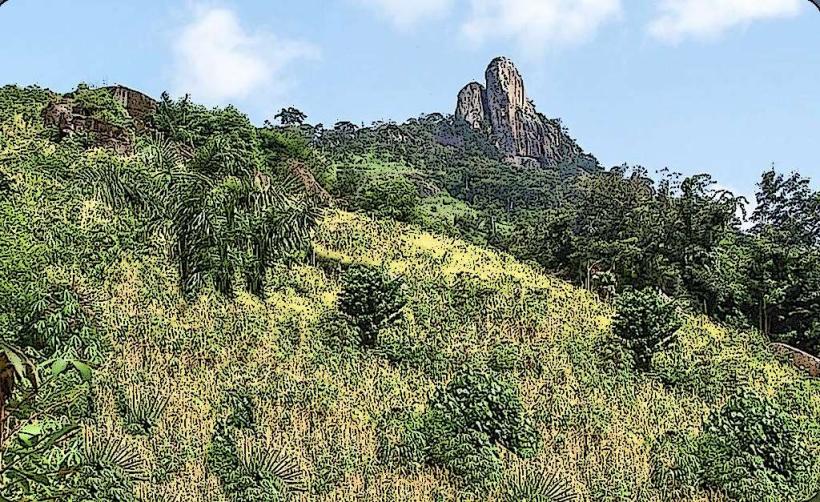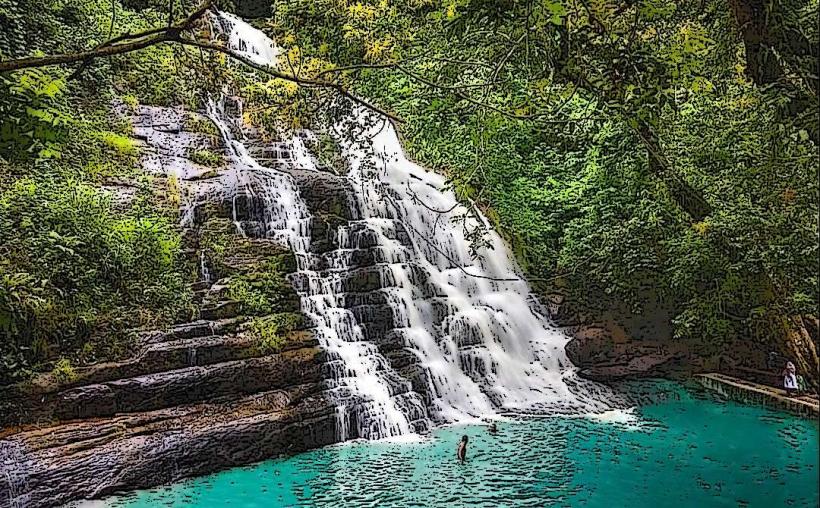Information
Landmark: Sacred Forest of ManCity: Man
Country: Cote d-Ivoire
Continent: Africa
Sacred Forest of Man, Man, Cote d-Ivoire, Africa
Overview
Tucked inside the city of Man in western Côte d’Ivoire, the Sacred Forest of Gbêpleu brims with meaning and teems with life, from rustling canopy leaves to the call of hidden birds, in addition it’s both a haven for wildlife and a sacred site steeped in the Dan people’s traditions, where drums echo at dusk through the dominant Yacouba homeland.Covering about eight hectares in the Gbêpleu neighborhood of Man, Tonkpi Region, Montagnes District, this forest was declared a national cultural heritage site by the Ivorian government in October 2021, at the same time it’s one of the few sacred urban forests left in Côte d’Ivoire, where the air smells faintly of damp leaves, and it helps keep the city’s ecological balance intact.The Sacred Forest holds deep cultural and spiritual meaning, believed to be home to ancestors and spirits-a quiet heart of the Dan cosmology where wind stirs the leaves like whispered prayers, meanwhile it’s part of initiation rites, especially for teenage boys, where they learn the traditions, taboos, and duties of adulthood-often around a fire’s crackle at night.Strong taboos keep the forest secure: no one may cut its trees, hunt its animals, or take even a single stone, as tradition forbids it, not only that local elders, along with seasoned spiritual custodians-often called forest priests or guardians-watch over how the forest’s resources are used and make sure its quiet paths stay protected.Deep in the forest, sacred shrines and ritual stones lie tucked away, sometimes beneath moss or behind a curtain of leaves, unseen by those who haven’t earned the right to find them, then even in the heart of the city, the forest thrives with dense tropical growth-mahogany, iroko, bamboo, lianas, and ferns crowd the shade-while its most celebrated inhabitants, the sacred green monkeys (Chlorocebus sabaeus), leap through the branches, revered and protected by tradition.The monkeys are used to people and often roam along the forest’s edge, pausing when someone holds out a luminous yellow banana, on top of that the area bustles with life-birds dart overhead, lizards bask on warm stones, and butterflies drift past-each adding to the city’s rich mix of species.The forest sits only a few minutes from Man’s bustling center, and you can stroll there on foot or hop a local bus with ease, then you’re welcome to explore the forest, but always go with a local guide or elder who can point out its meaning and make sure traditions-like avoiding certain sacred trees-are respected.In some sacred areas, you might not be allowed to take photos-especially close to an altar or where rituals are performed, the air heavy with incense, alternatively visitors should dress modestly, keep their voices low, and avoid touching or taking anything-leave even the smooth river stones where they lie.Monkeys: People love feeding the sacred monkeys, especially when they reach out with quick, curious hands, but it’s critical to do so with respect, likewise people often bring bananas as offerings, their dazzling yellow skins catching the light.Just so you know, The forest stays protected through a blend of age-antique customs and official national recognition, much like the way villagers still gather under the timeworn banyan tree to settle disputes, at the same time local elders, youth groups, and a few NGOs are working together to spread the word about conservation, especially now that modern housing projects are creeping right up to the forest’s edge where the pine scent begins.In 2021, officials granted heritage status to protect the forest’s integrity and draw visitors for eco-cultural tourism, inviting them to wander beneath its cool, green canopy, to boot follow local customs: never go in by yourself, slightly often An elder or guide must lead the way, even if it’s just through a quiet, incense-filled hall, what’s more don’t take photos of sacred altars or any masked dancers you behold, like the ones with radiant feathers and painted faces.Don’t litter-around here, even something as miniature as dropping a gum wrapper is taken seriously, as a result stay on the marked paths; some spots are off-limits for spiritual reasons, and you might behold sacred stones tucked beneath the trees, generally Many visitors pair their journey to the Sacred Forest with nearby gems: Les Cascades de Man, a clear waterfall tumbling just outside the city; La Dent de Man, a tooth-shaped peak perfect for a morning hike; and Mont Tonkoui, the nation’s second-highest mountain with sweeping, wind-filled views, and the Sacred Forest of Gbêpleu isn’t merely preserved greenery-it’s a living spiritual landscape, guarded by tradition and honored by generations.Visitors to Man get a rare chance to behold ecology, mythology, and everyday community life woven together-like threads in a shining festival cloth-into the region’s cultural fabric.
Author: Tourist Landmarks
Date: 2025-09-27



